The Renewables Grid Initiative's main goal is to bring people together that otherwise would not likely talk to each other, nor work with each other. In this interview, Antonella Battaglini, CEO of Renewables Grid Initiative, tells us about their unique collaboration of environmental NGOs and transmission system operators from across Europe and how they're working to enable the further steady growth of renewable energy and energy transition.
Please tell us about the Renewables Grid Initiative - what is your mission and why is there a need for such a grid?
The Renewables Grid Initiative is a unique collaboration of environmental NGOs and transmission system operators (TSOs) from across Europe. We promote transparent, environmentally sensitive grid development to enable the further steady growth of renewable energy and the energy transition.
We believe that we will need to increase the share of renewable energy in the system much faster if we want to achieve the goals set in the Paris Agreement. For this, we will need to utilise all available resources – from those which are more remote and thus require connection to consumption centres to decentral distributed sources. The electricity grid is in both cases the backbone, which keeps the system balanced and allows for decarbonisation across vast geographical regions. So, while we know that we will need to develop new and upgrade existing grids in general, the question of how this exactly looks like and what the next steps are is much more complicated. We continuously work together with our members and other stakeholders to address these questions.
In a recent statement, Miguel Arias Cañete, Commissioner for Climate Action and Energy, said the EU is proposing to focus the new projects on key electricity interconnections and smart grids. How does this affect your work?
We at RGI have been working with EU institutions, in particular the European Commission, for years on that subject. We strongly support the Commission’s efforts of promoting stronger interconnection between member states. However, we see that the sheer fact of the EU promoting certain projects does not necessarily help project promoters on the ground. Therefore, minimum standards on public participation set in European legislation (in the so-called TEN-E legislation), as well as a strong legal framework on nature protection (via the EU Nature Directives as well as the legislation on Strategic Environmental Assessments and Environmental Impact Assessments) are as essential for the timely implementation of these infrastructure projects.
What are some of your key activities when it comes to achieving your mission?
Our main goal is to bring people together that otherwise would not likely talk to each other, nor work with each other. We do this with the help of a multitude of tools and on a variety of topics. One integral work stream focuses on the exchange and dissemination of best practices. We do this for example via workshops, a webinar series or our international exchange programme “Energy Regions in Transition”, under which we organise learning journeys to regions outside of Europe, for example in the US and China, to learn from their experience. In order to identify more practices worth sharing, we have also initiated the “Good Practice of the Year” award a few years ago which is given out annually, in cooperation with the European Commission.

Who are your stakeholders and how do you work with different actors to foster system change?
Our main stakeholders are our members – environmental NGOs and TSOs from across Europe. Of course, we also include organisations that are not members yet in our discussions, both from Europe and beyond. For instance, we have established very good relationships with our peers in California while visiting them three years in a row. Other strategic partners include ENTSO-E, the association of all TSOs in Europe, with which we have signed a Memorandum of Understanding last year, or associations, such as WindEurope and EDSO for Smart Grids.
Finally, political stakeholders are very important when it comes to shaping the regulatory framework in which our members operate. Since we are a European organisation, our key stakeholders here are the European Commission (we work in particular with the Directorate General Energy and Environment, which is also co-funding part of our work) as well as the European Parliament.
In your opinion, what are the greatest challenges facing EU climate policy?
Similar to many other EU policies, one of the biggest challenges is to define an overall strategic goal, while still allowing for different national approaches to get there. We will always have some countries that consider themselves the frontrunners of climate policy, while others – sometimes also due to economic challenges – will benefit from their learning and thus have the opportunity to leapfrog.
Moreover, I think it is indispensable to bring along society on the implementation of climate policy. If we really want to achieve the 1.5C target, we will need to transform many sectors, which will have considerable impacts on the daily lives of European citizens. Therefore, we will only be successful if we involve them in our discussions throughout every step of the way.
And, finally, global politics have shifted substantially over the last couple of years. We see massive developments in China’s power sector on the one hand and the US leaving the Paris Agreement on the other. I think it will be more important than ever for Europe to play a strong role in global climate policies.
What has been your social impact to date?
Over the past nine years, we have helped our members to develop trust with each other. This might seem trivial at first. However, when we started, NGOs and TSOs were often opposing each other in grid projects on the ground as well as on national political level. A lot of times they even ended up meeting in front of the courts. Thanks to RGI, the two groups have developed a stronger respect for each other’s work and interests. This has developed trust and the willingness to address common challenges together. The fact that NGOs and TSOs nowadays develop and implement projects together is an achievement that wasn’t expected by many in the beginning. This has a great value because it contributes to delivering better projects for society and the environment and can reduce delays.
Moreover, together with our members, we have improved planning and permitting processes for grid development projects – both in terms of transparency and public participation and in terms of nature and environmental protection. Thus, impacts of new electricity infrastructure can be minimised. Stakeholders and citizens are better informed and enabled to actually engage in procedures and decisions.
Perhaps you can tell us a little about your professional background and how you became involved in the Renewables Grid Initiative?
In what seems like a former life I worked for the pharmaceutical industry at the beginning of my career. I then transitioned to academia, where I started with work on climate change impacts, implementation of Article 2 of the UNFCCC (which is about staying below 2°C) and quickly moved to work on renewable energies. At that time it became clear very quickly that you need to connect the geographically dispersed renewables to load centres, for this we needed grids. However, at that point in time, it was 2007, I could hardly find anyone else thinking about grids.
In 2009, I realised that the TSOs (which were now independent due to the unbundling regulation) had something in common with the NGO community and that they needed to work together. TSOs had to integrate in their system increasing shares of renewables and the NGOs had to realise that without the necessary infrastructure in place their vision of a renewable world could not be realised. We founded RGI in July 2009 with four members and have grown to 19 from all over Europe since.
And finally, using just three words, please tell us what it’s like to work at the Renewables Grid Initiative.
Stimulating, diverse, rewarding.
Want to join their team? Check here for current open positions.

